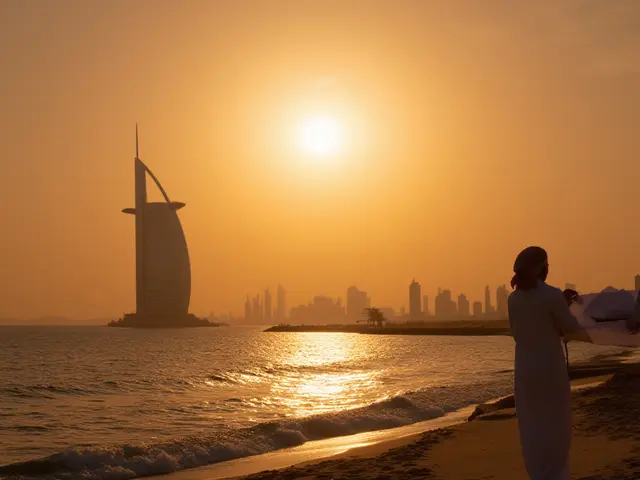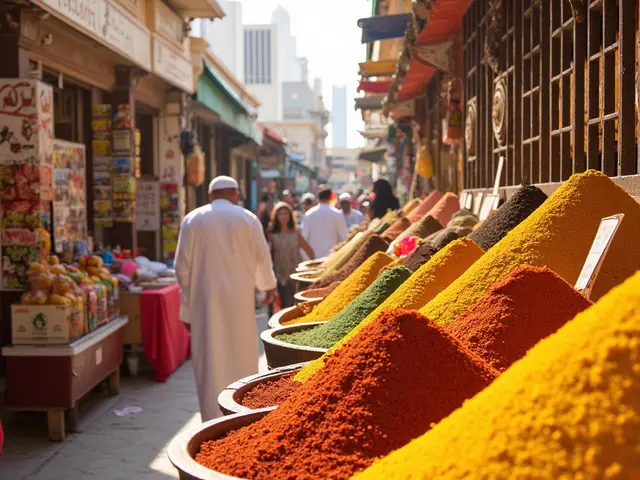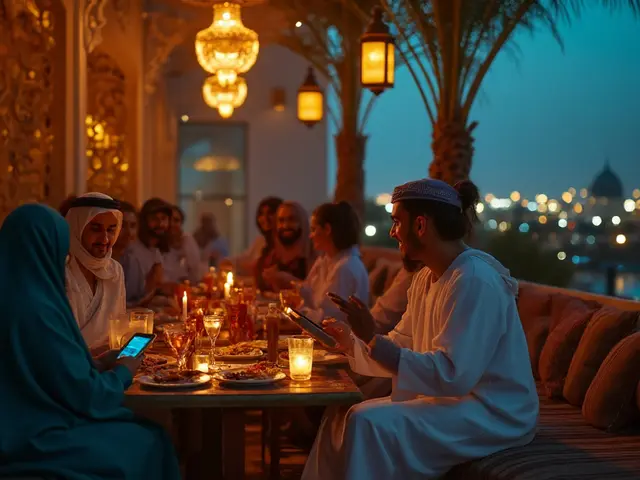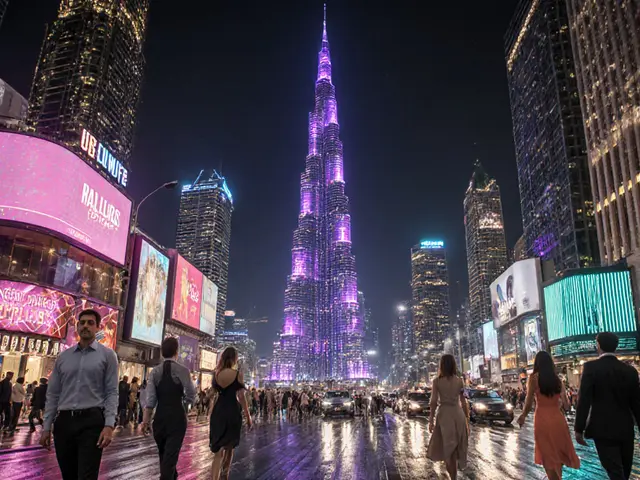Key Takeaways
- The Jumeirah Mosque is one of Dubai’s most photographed religious sites.
- It showcases classic Indo‑Islamic style with white domes, horseshoe arches, and intricate mosaics.
- Free guided tours are run by the Sheikh Mohammed Centre for Cultural Understanding.
- Dress modestly, remove shoes, and be ready for a short talk on the five pillars of Islam.
- Compared with other UAE mosques, Jumeirah offers the easiest access for tourists.
Direct Answer
If you’re looking for a vivid glimpse of Islamic art and a welcoming cultural experience in Dubai, the Jumeirah Mosque is the place to go. Open to non‑Muslim visitors, it combines striking Indo‑Islamic architecture with free daily tours that explain the faith’s basics.
Comprehensive Guide to Jumeirah Mosque
Imagine stepping into a shimmering white building that feels like a desert oasis of calm, right in the heart of a bustling global city. That’s the vibe at Jumeirah Mosque, a structure that not only serves the local Muslim community but also works as a bridge between cultures. Whether you’re a first‑time traveler or a seasoned explorer of religious sites, this guide walks you through everything you need to know.
Definition and Context
Jumeirah Mosque is a mosque in the Jumeirah district of Dubai, built in 1979 in a classic Indo‑Islamic style. Its soaring white domes, horseshoe arches, and colourful mosaic tiles make it a visual landmark for both locals and tourists. The building reflects the broader tradition of Islamic architecture is a design approach that emphasizes geometric patterns, calligraphy, and the interplay of light and shadow, often using domes, minarets, and courtyards to create a sense of unity and spirituality. While Dubai is famed for its skyscrapers, Jumeirah Mosque reminds visitors that the city’s heritage is rooted in centuries‑old religious and artistic practices.
Benefits of Visiting the Mosque
- Cultural immersion: The guided tour, led by volunteers from the Sheikh Mohammed Centre for Cultural Understanding (SMCCU), offers an honest look at daily Islamic life.
- Architectural education: Spot the blend of Mamluk‑style minarets and Persian‑inspired tilework that influenced many later UAE structures.
- Photography opportunities: The white façade against a bright blue sky creates a perfect backdrop for social‑media‑ready shots.
- Language access: Tours are available in English, Arabic, Hindi, and Urdu, reflecting Dubai’s multicultural audience.
- Peaceful escape: The interior’s quiet courtyards provide a calm retreat from the city’s hustle.
Types of Visits Available in Dubai
Jumeirah Mosque offers three main ways to experience the site:
- Standard daily tour: Runs every 30 minutes from 10:00 am to 5:30 pm, free of charge.
- Ramadan night tour: Special evenings after sunset during the holy month, featuring a short iftar (breakfast) and a lantern‑lit walk.
- Private group session: Booked through SMCCU for schools, corporate teams, or large families; includes a deeper dive into Islamic etiquette.
How to Find Jumeirah Mosque Services in Dubai
Getting there is straightforward:
- Metro: alight at Burj Khalifa/Dubai Mall station (Red Line) and take a 10‑minute taxi ride.
- Bus: Route 8 and F55 stop within a five‑minute walk of the mosque’s main gate.
- Car: GPS address - Al Jaddaf St, Jumeirah, Dubai - offers free on‑street parking on weekends.
When you arrive, look for the distinctive white domes and the small red‑and‑white sign that reads “Open to non‑Muslims - Tours Available”.
What to Expect During a Session
Here’s a quick walkthrough of a typical 45‑minute visit:
- Welcome desk: Hand over your passport (for registration) and receive a modesty guide.
- Shoe removal: Shoes are left in the designated rack; you’ll be provided with a disposable shoe cover if needed.
- Audio‑visual intro: A short film explains the five pillars of Islam and the mosque’s history.
- Architectural tour: Walk through the prayer hall, admire the chandeliers, and listen to stories about the Mughul‑inspired arches.
- Q&A: Guides encourage questions about prayer, fasting, and cultural customs.
- Departure: Visitors receive a small booklet with prayer times and a QR code linking to a virtual tour.
Photography is allowed in the courtyard and exterior, but not inside the prayer hall during worship.
Pricing and Booking
The standard tour is free. If you want a private group session, SMCCU charges AED 150 per hour for up to 15 participants, plus a modest contribution for refreshments. Booking can be done online via the SMCCU website or directly at the mosque’s welcome desk. No credit‑card fees, and cancellations up to 24 hours in advance are fully refunded.
Safety Tips
- Dress modestly - men wear long trousers, women wear long skirts or pants and cover their hair with a scarf (provided on‑site).
- Avoid eating or drinking inside the prayer hall; use the courtyard for snacks.
- Keep your belongings close; the mosque is a public space with heavy foot traffic.
- Respect prayer times - if a call to prayer (Adhan) sounds, remain silent and face the Qibla.
- Stay hydrated, especially during the summer months when temperatures can exceed 40 °C.
Comparison Table: Jumeirah Mosque vs. Al Farooq Omar Bin Al Khattab Mosque in Dubai
| Feature | Jumeirah Mosque | Al Farooq Mosque |
|---|---|---|
| Year Completed | 1979 | 1991 |
| Architectural Style | Indo‑Islamic (Mughal‑inspired) | Contemporary Arabesque |
| Tour Availability | Free daily tours, Ramadan night tours | Guided tours by appointment only |
| Capacity (prayer hall) | ≈1,200 worshippers | ≈2,500 worshippers |
| Location | Jumeirah, near Al Jaddaf | Al Barsha South, near Mall of the Emirates |
Frequently Asked Questions
What are the opening hours for the Jumeirah Mosque tours?
The free daily tours run every 30 minutes from 10:00 am to 5:30 pm, except on Fridays when the mosque is closed for Jumu'ah prayers.
Do I need to book a tour in advance?
No reservation is required for the standard free tour; just show up a few minutes early. Private group tours should be booked online at least 48 hours ahead.
Is photography allowed inside the mosque?
You may photograph the exterior and courtyard. Inside the prayer hall, photography is prohibited out of respect for worshippers.
What should I wear?
Men should wear long trousers; women need a long skirt or pants and a headscarf (provided on site). Avoid sleeveless tops, shorts, and tight clothing.
Can children visit the mosque?
Yes, families are welcome. Guides often tailor explanations for younger audiences, making it an educational outing.
Next Steps
Ready to explore a slice of Dubai’s spiritual heart? Grab your passport, hop on the metro to Burj Khalifa/Dubai Mall, and stroll the short taxi ride to the iconic white domes. Remember the modesty guide, and you’ll walk away with a deeper appreciation of Islamic art, history, and hospitality.





